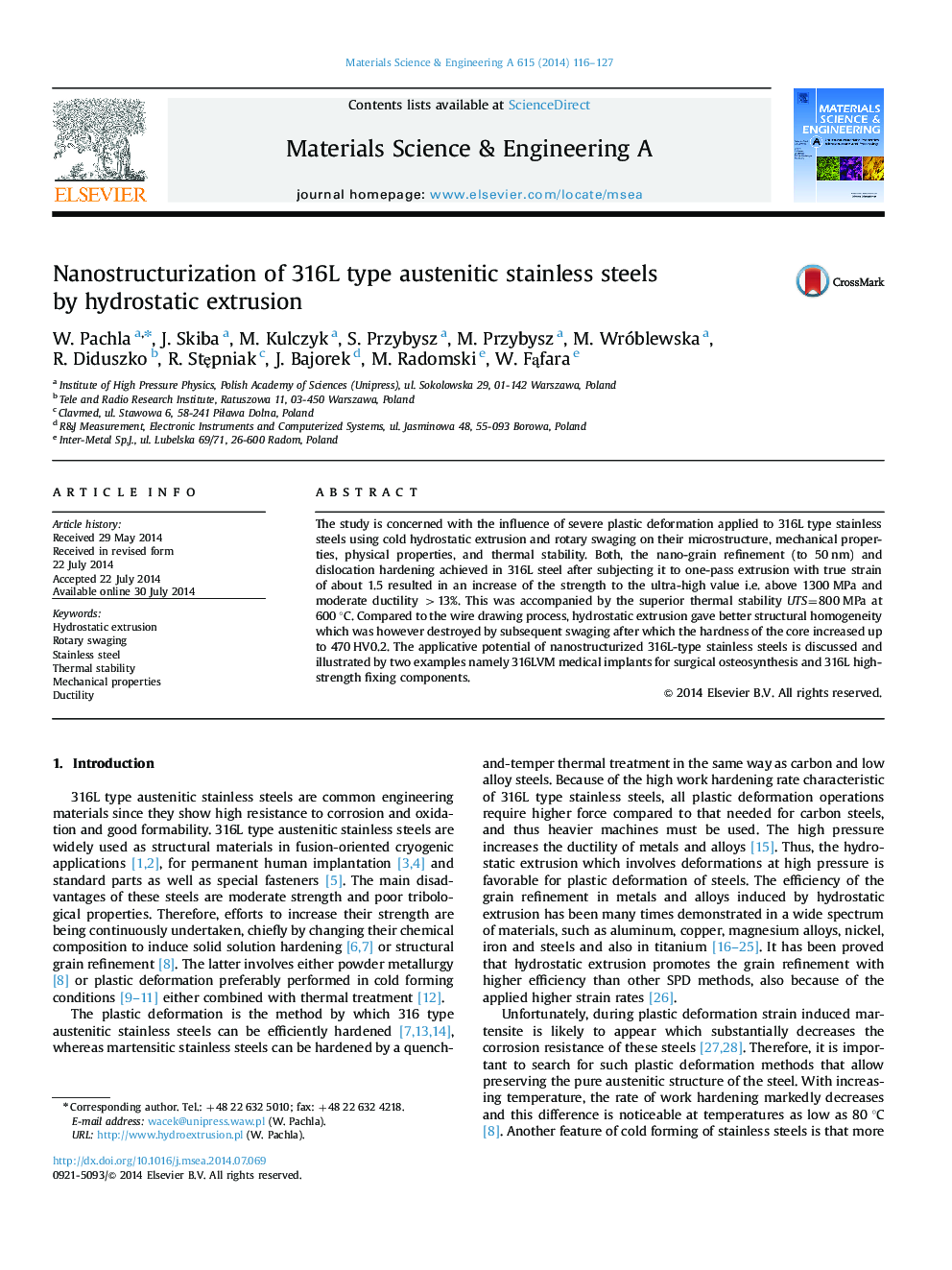| Article ID | Journal | Published Year | Pages | File Type |
|---|---|---|---|---|
| 7979986 | Materials Science and Engineering: A | 2014 | 12 Pages |
Abstract
The study is concerned with the influence of severe plastic deformation applied to 316L type stainless steels using cold hydrostatic extrusion and rotary swaging on their microstructure, mechanical properties, physical properties, and thermal stability. Both, the nano-grain refinement (to 50 nm) and dislocation hardening achieved in 316L steel after subjecting it to one-pass extrusion with true strain of about 1.5 resulted in an increase of the strength to the ultra-high value i.e. above 1300 MPa and moderate ductility >13%. This was accompanied by the superior thermal stability UTS=800 MPa at 600 °C. Compared to the wire drawing process, hydrostatic extrusion gave better structural homogeneity which was however destroyed by subsequent swaging after which the hardness of the core increased up to 470 HV0.2. The applicative potential of nanostructurized 316L-type stainless steels is discussed and illustrated by two examples namely 316LVM medical implants for surgical osteosynthesis and 316L high-strength fixing components.
Keywords
Related Topics
Physical Sciences and Engineering
Materials Science
Materials Science (General)
Authors
W. Pachla, J. Skiba, M. Kulczyk, S. Przybysz, M. Przybysz, M. Wróblewska, R. Diduszko, R. StÄpniak, J. Bajorek, M. Radomski, W. FÄ
fara,
